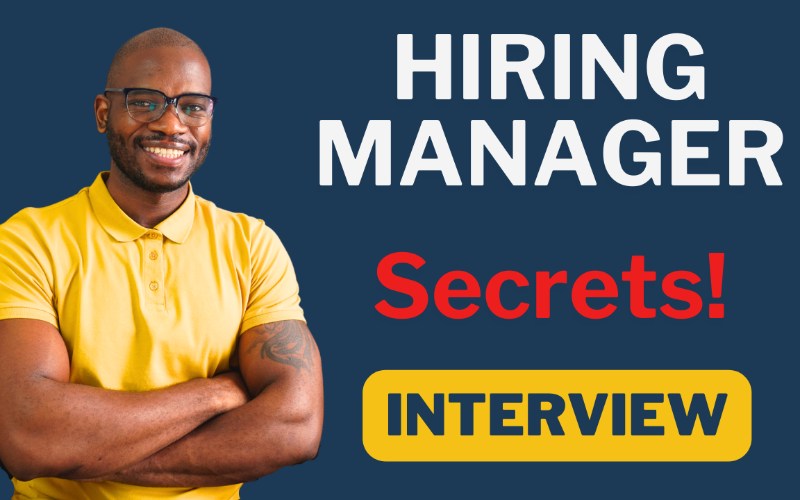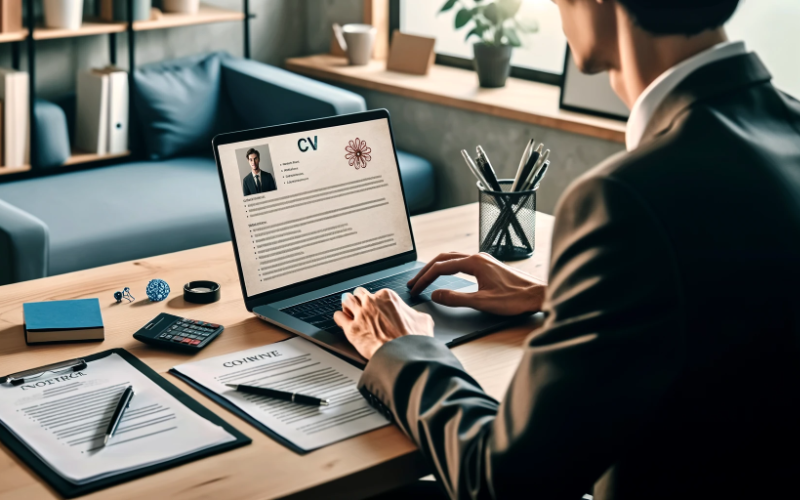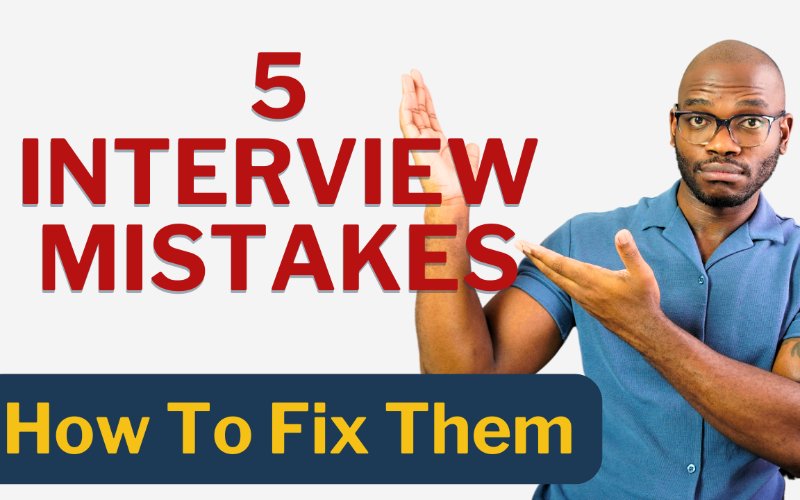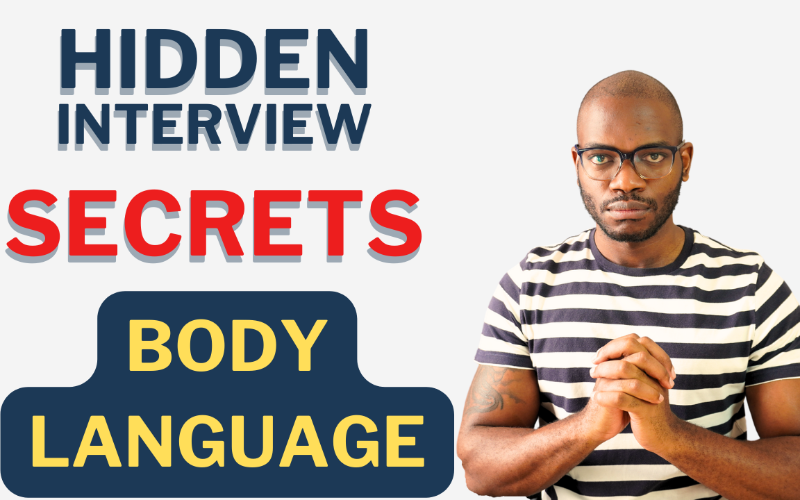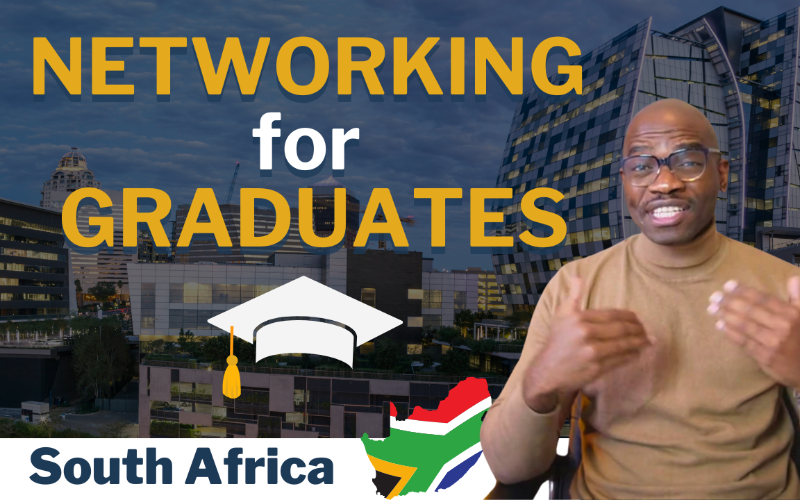In the high-stakes arena of job interviews, non-verbal communication plays a pivotal role in shaping first impressions. The nuances of body language can convey confidence, competence, and even cultural awareness. This comprehensive guide explores the impact of body language in interviews, offering actionable insights to master the art of non-verbal communication. As we delve into the intricacies of powerful body language, remember that authenticity is key – it's about enhancing your natural communication style for a winning interview presence.
The Impact of Body Language in Interviews
Before delving into specific body language cues, it's essential to understand the profound impact non-verbal communication can have on interview outcomes. According to a study by CareerBuilder, 67% of employers say that failure to make eye contact is a common non-verbal mistake, while 38% believe not smiling is a significant faux pas. These statistics highlight the importance of mastering body language to create a positive first impression.
Moreover, non-verbal cues contribute significantly to the interviewer's perception of your confidence, credibility, and interpersonal skills. When harnessed effectively, body language can be a powerful tool to convey professionalism and establish rapport.
For a deeper understanding of the subject, refer to authoritative sources like the Harvard Business Review and Psychology Today, which often feature in-depth articles on non-verbal communication.
Positive Body Language Signals
Eye Contact
One of the most impactful positive body language signals is maintaining appropriate eye contact. This simple yet powerful cue conveys confidence, attentiveness, and sincerity. When making eye contact during an interview, aim for a balance – not too intense to appear confrontational, yet not too fleeting to seem disengaged. This establishes a connection with the interviewer and signals your interest in the conversation.
Smiling
A genuine smile can be your secret weapon in an interview. Smiling not only projects a positive and approachable demeanor but also alleviates tension in the room. It's important to strike a balance – an enthusiastic smile communicates warmth, while a constant grin may be perceived as insincere. Practice smiling naturally in front of a mirror to gauge your comfort level and avoid appearing forced.
Posture
Your posture speaks volumes about your confidence and self-assurance. Sit or stand up straight with your shoulders back to convey professionalism and attentiveness. Avoid slouching, which can be interpreted as a lack of interest or confidence. A strong posture not only enhances your physical presence but also positively influences your mindset, boosting confidence.
Handshake
The handshake is often the first physical interaction in an interview and sets the tone for the conversation. A firm, professional handshake conveys confidence and establishes a positive connection. Practice with a friend to find the right balance – not too limp, indicating lack of assertiveness, and not too forceful, which may come across as overly dominant.
Mastering these positive body language signals creates a foundation for a winning interview presence. Remember, authenticity is crucial – these cues should enhance, not overshadow, your natural communication style.
For additional insights on positive body language, refer to renowned body language expert Allan Pease's book, "The Definitive Book of Body Language."
Negative Body Language Signals to Avoid
While positive body language signals can elevate your interview presence, certain negative cues may inadvertently hinder your success. Awareness of these signals is crucial for course correction and ensuring a favorable impression.
Avoiding Eye Contact
Insufficient or overly intense eye contact can send mixed signals to the interviewer. Avoiding eye contact may be perceived as disinterest or lack of confidence, while prolonged and intense eye contact may come across as aggressive or confrontational. Strive for a natural and comfortable level of eye contact to convey engagement without overwhelming the interviewer.
Crossed Arms
Crossing your arms during an interview can project defensiveness or resistance, hindering effective communication. Open body language, with arms uncrossed, suggests openness to ideas and collaboration. Be mindful of this cue, especially during moments of discussing challenges or differences of opinion, to avoid creating barriers.
Fidgeting
Nervous habits like fidgeting, tapping, or playing with hair can detract from your professionalism. While it's natural to feel some nervous energy, consciously work on minimizing fidgeting behaviors. Practice maintaining composure by keeping your hands still and grounded, projecting a sense of calm and confidence.
Weak Handshake
A weak or overly strong handshake can leave a lasting impression on the interviewer. A limp handshake may be interpreted as a lack of assertiveness, while an excessively strong grip can come across as domineering. Aim for a firm and confident handshake, matching the pressure of the interviewer, to establish a positive initial connection.
Avoiding these negative body language signals is as crucial as incorporating positive cues. Remember, the goal is to present yourself authentically while mitigating potential pitfalls that may impact the interviewer's perception.
For further exploration of body language nuances, consider exploring the work of renowned sociolinguist Deborah Tannen, known for her research on non-verbal communication.
Tailoring Body Language to Different Interview Situations
Navigating the diverse landscape of interview scenarios requires a nuanced approach to body language. Whether it's an in-person interview, a virtual meeting, or a panel discussion, adapting your non-verbal cues to the specific context is crucial for success.
In-Person Interviews
In traditional face-to-face interviews, your physical presence and immediate engagement are key. Here's how you can tailor your body language for in-person settings:
-
Sit or Stand Confidently: Maintain good posture and stand or sit upright to project confidence and attentiveness.
-
Establish Eye Contact: Demonstrate engagement by making consistent, natural eye contact with the interviewer.
-
Use Purposeful Gestures: Employ purposeful hand gestures to emphasize points, showcasing enthusiasm and clarity.
Virtual Interviews
With the rise of remote work, virtual interviews have become commonplace. Adapting your body language to the constraints of video calls is essential:
-
Maintain Eye Contact Through the Camera: Direct your gaze at the camera to simulate eye contact, creating a more connected experience.
-
Mind Your Background: Ensure a clean and professional background to minimize distractions and convey a polished image.
-
Test Technical Setup: Prioritize a smooth interview by checking your camera, microphone, and internet connection in advance.
For a comprehensive guide on mastering virtual interviews, check out The Ultimate Guide to Virtual Interviews: Succeeding in the Digital Era
Panel Interviews
In panel interviews, where multiple interviewers assess your suitability for the role, balancing your attention is crucial:
-
Distribute Eye Contact: Rotate your eye contact between panel members to engage everyone in the conversation.
-
Acknowledge Each Questioner: Direct your responses to the specific panel member who asked the question, showing attentiveness.
-
Demonstrate Inclusivity: Use open body language to include all panel members in the conversation, fostering a sense of collaboration.
Adapting your body language to different interview situations showcases your versatility and ability to navigate diverse professional scenarios.
For a deeper dive into the dynamics of panel interviews, explore the insights shared by organizational psychologist and bestselling author Adam Grant in his book "Give and Take."
Building Rapport Through Non-Verbal Communication
Establishing a connection with the interviewer through non-verbal cues is a powerful strategy. By incorporating certain techniques, you can foster a sense of rapport and ease throughout the interview.
Mirroring
Mirroring involves subtly imitating the body language of the interviewer, creating a sense of similarity and understanding. While this should be done organically and not overtly, mirroring can enhance interpersonal connection:
-
Reflect Posture and Gestures: Match the interviewer's body language to create a sense of shared understanding.
-
Adopt Similar Energy Levels: Align your energy levels with the interviewer's, whether they are animated or more reserved.
Active Listening
Demonstrating active listening through non-verbal cues communicates your genuine interest in the conversation. Consider the following techniques:
-
Nodding: Use occasional nods to signal agreement and show that you are actively processing information.
-
Maintaining Eye Contact: Sustain eye contact to convey focused attention and engagement.
-
Avoiding Interrupting: Allow the interviewer to complete their thoughts before responding, showing respect for their perspective.
Expressing Empathy
Non-verbal cues can convey empathy and understanding, fostering a positive connection with the interviewer:
-
Facial Expressions: Use facial expressions to convey empathy, such as a sympathetic smile or concerned expression.
-
Tone of Voice: Modulate your tone to express warmth and understanding, especially when discussing more sensitive topics.
Building rapport through non-verbal communication is a subtle yet impactful strategy for leaving a positive and memorable impression.
For further insights on effective communication and rapport-building, explore the works of renowned psychologist Daniel Goleman, particularly his book "Emotional Intelligence."
Addressing Nervousness and Managing Stress Through Body Language
Nervousness is a common experience during interviews, but managing stress through intentional body language can make a significant difference in how you are perceived. Implement the following strategies to project confidence, even in challenging moments:
Deep Breathing Techniques
Controlling your breath not only helps manage stress but also conveys a calm and composed demeanor:
-
Practice Deep Breaths: Prior to the interview, engage in deep breathing exercises to calm nerves.
-
Incorporate Breathing Breaks: If stress surfaces during the interview, discreetly take a moment for a calming breath.
Power Posing
Amy Cuddy's research on power posing suggests that adopting expansive and open postures can positively impact confidence levels:
-
Pre-Interview Power Pose: Spend a few minutes in a power pose before the interview to boost confidence.
-
Maintain Open Body Language: Throughout the interview, use open postures to convey confidence and resilience.
Visualizing Success
Harness the power of visualization to mentally prepare for success:
-
Positive Imagery: Picture yourself navigating the interview confidently and successfully.
-
Envision a Positive Outcome: Visualize the positive impact of your responses and interactions on the interviewer.
Addressing nervousness through intentional body language not only benefits your personal confidence but also positively influences how you are perceived by the interviewer.
For a deeper exploration of the mind-body connection, consider exploring the research of neuroscientist Lisa Feldman Barrett, particularly her book "How Emotions Are Made."
The Role of Mirroring and Matching
Mirroring and matching are techniques rooted in the psychology of effective communication. By subtly aligning your non-verbal cues with those of the interviewer, you create a sense of rapport and connection. Let's explore how to effectively implement mirroring and matching in different aspects of the interview:
Building Connection through Mirroring
Mirroring involves replicating the body language of the interviewer, fostering a sense of shared understanding and connection:
-
Posture and Gestures: Observe the interviewer's posture and gestures and subtly mirror them to create a sense of similarity.
-
Energy Levels: Match the energy levels of the interviewer, whether they convey enthusiasm or a more composed demeanor.
-
Speech Patterns: Adapt your speech patterns to align with the interviewer's pace and tone, establishing a harmonious conversation.
Adapting Pace and Tone
Mirroring extends to the pace and tone of speech, creating a more cohesive and engaging interaction:
-
Speech Speed: Adjust your speaking speed to align with the interviewer's, ensuring a comfortable conversational flow.
-
Tone of Voice: Mimic the general tone of the interviewer, whether it's a more formal or casual style, enhancing communication resonance.
Expressing Empathy through Mirroring
Mirroring can be a powerful tool to convey empathy, particularly in moments of discussion that require a nuanced and understanding approach:
-
Facial Expressions: Mirror the interviewer's facial expressions to convey empathy and shared emotional resonance.
-
Body Language Cues: Reflect subtle body language cues, such as nodding, to affirm understanding and agreement.
Real-world scenarios often demonstrate the efficacy of mirroring in building connections and fostering positive interactions. Consider the following case study:
Case Study: Mirroring Success in Negotiations
"A job candidate, Alex, faced a challenging negotiation during an interview for a leadership role. The interviewer, a seasoned executive, initially appeared reserved and focused on key performance indicators. Recognizing the importance of establishing rapport, Alex subtly mirrored the executive's posture and communication style.
As the interview progressed, Alex noticed a shift in the executive's demeanor – they became more open and engaged. The mirroring technique created a connection, breaking down initial barriers and leading to a more collaborative discussion. Ultimately, Alex secured the job offer and attributed part of the success to the strategic use of mirroring."
Mirroring Dos and Don'ts
While mirroring can enhance communication, it's essential to use this technique judiciously:
-
Be Subtle: Avoid overt and exaggerated mirroring, which may come across as insincere or manipulative.
-
Maintain Authenticity: Allow mirroring to enhance your natural communication style rather than overshadowing it.
-
Adapt Appropriately: Be mindful of the context and adapt mirroring based on the interviewer's cues without copying every movement.
Incorporating mirroring and matching techniques into your interview strategy can create a more harmonious and connected interaction, positively influencing the interviewer's perception.
For a deeper exploration of effective communication strategies, delve into the insights shared by Chris Voss, a former FBI hostage negotiator, in his book "Never Split the Difference."
Using Space Effectively in an Interview Setting
The effective utilization of space during an interview contributes significantly to how you are perceived. Proxemics, the study of personal space, plays a crucial role in non-verbal communication. Let's explore how to leverage spatial awareness for a more impactful interview presence:
Personal Space Dynamics
Respecting personal space boundaries is essential to convey professionalism and ensure a comfortable interaction:
-
Maintain an Appropriate Distance: Stand or sit at a distance that is neither too close nor too far, respecting cultural norms.
-
Avoid Invasion of Personal Space: Be mindful of physical proximity to prevent any discomfort for the interviewer.
Seating Arrangement Considerations
The arrangement of seating in an interview setting can influence the dynamics of communication:
-
Choose an Open Seating Arrangement: Opt for a seating arrangement that promotes openness and encourages conversation.
-
Align with Cultural Expectations: Be aware of cultural norms related to seating arrangements and adapt accordingly.
Utilizing Gestures Purposefully
Gestures, when used purposefully and in moderation, can enhance communication:
-
Express Ideas Through Gestures: Use gestures to underscore key points and convey enthusiasm.
-
Avoid Overemphasis: Refrain from excessive or distracting gestures that may detract from your message.
Spatial awareness extends to the effective utilization of the interview room and surroundings:
Case Study: Spatial Awareness in Group Interviews
"During a panel interview, Sarah, a candidate for a managerial position, strategically used spatial awareness to her advantage. Recognizing the dynamics of the group, she positioned herself to be visible to all panel members without appearing dominant. Her purposeful use of space created an inclusive atmosphere, contributing to a positive evaluation by the panel."
Adapting Gestures to Cultural Sensitivity
The interpretation of gestures can vary across cultures, emphasizing the importance of adapting your body language to cultural expectations:
-
Research Cultural Norms: Familiarize yourself with cultural expectations regarding personal space and gestures.
-
Respect Diversity: Embrace a diverse approach to spatial dynamics, recognizing and respecting cultural differences.
Leveraging spatial awareness effectively contributes to a well-rounded and culturally sensitive interview presence. By paying attention to personal space, seating arrangements, and gestures, you enhance the overall non-verbal communication experience.
For additional insights on the cultural dimensions of communication, explore the works of Geert Hofstede, a renowned expert in cultural studies.
Adapting Cultural Sensitivity in Body Language
In a globalized professional landscape, understanding and adapting to cultural nuances in body language is essential for successful communication. Let's explore how you can foster cultural sensitivity through your non-verbal cues during interviews:
Awareness of Cultural Differences
Different cultures have distinct expectations regarding body language, personal space, and gestures. Being aware of these differences is crucial for adapting your non-verbal communication:
-
Research Cultural Norms: Prior to an interview, research the cultural norms of the company and the interviewer.
-
Consider Diversity: If the interview involves individuals from diverse cultural backgrounds, aim for a universally respectful approach.
Hand Gestures and Expressions
Hand gestures can convey meaning differently in various cultures. It's essential to navigate these differences judiciously:
-
Minimize Potentially Offensive Gestures: Be cautious about using hand gestures that may carry unintended meanings in certain cultures.
-
Use Commonly Accepted Gestures: When in doubt, opt for universally accepted gestures that convey positivity and openness.
Eye Contact Variations
The significance and interpretation of eye contact vary across cultures. Understanding these variations allows you to strike the right balance:
-
Adjust Eye Contact Intensity: In some cultures, prolonged eye contact is a sign of respect, while in others, it may be perceived as confrontational. Adjust your eye contact based on cultural norms.
-
Interpret Cultural Cues: Be attuned to subtle cues from the interviewer regarding their comfort level with eye contact.
Respecting Personal Space
Respecting personal space is a cornerstone of cultural sensitivity, and its interpretation can differ widely:
-
Observe Cultural Proxemics: Different cultures may have varying expectations regarding physical proximity during interactions. Respect these norms to create a comfortable environment.
-
Adapt Seating Arrangements: If possible, adapt seating arrangements to align with cultural expectations, ensuring a respectful distance.
Tone and Volume of Speech
The tone and volume of your speech can also be influenced by cultural norms. Pay attention to these nuances:
-
Modulate Speech Tone: In some cultures, a more subdued tone may be preferred, while in others, a dynamic and expressive tone is welcomed. Adapt accordingly.
-
Adjust Volume: Be mindful of the appropriate volume level based on cultural expectations. Avoid being too loud or too soft, aiming for a balanced and respectful approach.
Case Study: Navigating Cultural Sensitivity in Interviews
"During an international interview, Michael, a candidate with cross-cultural experience, demonstrated cultural sensitivity through his body language. He subtly adjusted his gestures, maintained respectful eye contact, and adapted his tone to align with the cultural background of the interviewers. This conscious effort contributed to a positive perception of Michael's cultural awareness and flexibility."
Continuous Learning and Adaptation
Cultural sensitivity is a dynamic aspect of effective communication. As you navigate interviews with individuals from diverse backgrounds, embrace a mindset of continuous learning and adaptation:
-
Seek Feedback: If appropriate, seek feedback on your non-verbal cues from individuals familiar with the cultural context.
-
Reflect and Adjust: Reflect on your experiences, continuously refine your approach, and remain open to refining your non-verbal communication.
By integrating cultural sensitivity into your body language, you not only enhance your interview presence but also contribute to a more inclusive and respectful professional environment.
For a deeper exploration of cultural intelligence, explore the works of David Livermore, particularly his book "Leading with Cultural Intelligence."
Adapting Body Language During Different Interview Phases
The various phases of an interview, from the initial greeting to the closing remarks, present unique opportunities to showcase adaptability in your body language. Let's explore how you can tailor your non-verbal cues during different interview stages:
Greeting and Introduction
The first impression sets the tone for the entire interview. Effectively navigating the initial greeting requires a combination of warmth and professionalism:
-
Confident Handshake: Initiate the interview with a firm and confident handshake, maintaining eye contact to convey assurance.
-
Engaging Smile: Accompany your handshake with a genuine smile to create a welcoming atmosphere.
-
Open Body Posture: Maintain an open and approachable posture to signal friendliness and receptivity.
Small Talk and Ice Breakers
Small talk serves as an icebreaker, allowing you to establish rapport with the interviewer. Navigate this phase with a balance of friendliness and professionalism:
-
Casual Gestures: Integrate subtle and appropriate gestures during small talk to convey a relaxed and amicable demeanor.
-
Active Listening: Demonstrate active listening through nodding and responsive facial expressions to convey genuine interest.
Technical or Scenario-Based Questions
As the interview transitions into more technical or scenario-based questions, adapt your body language to convey confidence and competence:
-
Maintain Eye Contact: Sustain consistent eye contact to convey focus and confidence in addressing technical queries.
-
Use Purposeful Gestures: Employ purposeful gestures to illustrate key points, enhancing clarity in your responses.
Behavioral Questions and Situational Scenarios
Behavioral questions often require thoughtful reflection on past experiences. Adjust your body language to effectively communicate your skills and competencies:
-
Reflective Posture: Adopt a reflective posture during behavioral questions, demonstrating thoughtful consideration of your experiences.
-
Align with Company Values: Integrate subtle cues that align with the company's values, showcasing cultural fit.
Closing Remarks and Follow-Up
Concluding the interview involves expressing gratitude and potentially discussing the next steps. Tailor your body language to leave a positive and memorable final impression:
-
Appreciative Gestures: Convey gratitude through appreciative gestures, such as a sincere thank-you and a closing smile.
-
Maintain Professionalism: Retain a professional demeanor even as the interview concludes, reinforcing your commitment to the opportunity.
Case Study: Navigating Different Interview Phases
"Emily, a candidate for a marketing position, adeptly navigated the various interview phases. During the greeting, she exuded confidence with a firm handshake and a warm smile. In small talk, she incorporated casual gestures, establishing a friendly rapport with the interviewer. As the interview delved into technical questions, Emily maintained focused eye contact and used purposeful gestures to articulate her expertise. During closing remarks, she expressed genuine gratitude, reinforcing her interest in the role."
Adapting to Virtual Interviews
In the era of virtual interviews, adapting your body language to the digital landscape is essential:
-
Camera Eye Contact: Direct your gaze at the camera to simulate eye contact, fostering a more connected experience.
-
Clear Facial Expressions: Ensure that your facial expressions are well-lit and easily discernible through the webcam.
-
Minimize Distractions: Create a clutter-free background to minimize distractions and maintain a professional appearance.
By consciously adapting your body language to the different phases of an interview, you not only showcase versatility but also enhance your overall communication effectiveness.
For additional insights on mastering the art of communication, explore the research of communication expert Julian Treasure, particularly his TED Talk on "How to Speak So That People Want to Listen."
Conclusion: Crafting a Memorable Interview Presence
Successfully navigating an interview extends beyond verbal acumen; your body language plays a pivotal role in shaping perceptions. By incorporating these strategies, from cultural sensitivity to adapting to different interview phases, you can craft a memorable and positive interview presence.
Remember, authenticity is key. While adapting your body language, ensure that it aligns with your genuine self and reflects your professional identity. Continuous refinement and a commitment to learning will empower you to excel in interviews, leaving a lasting impression on prospective employers.

